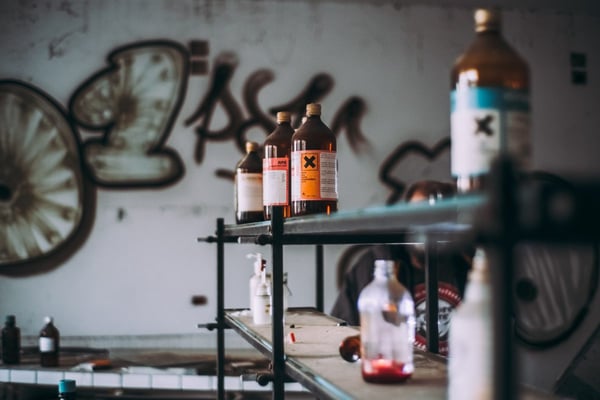Historically, both residential and commercial construction projects have resulted in the release of toxins from building materials. We’ve all heard of older homes containing things like lead paint and asbestos. Today, however, building green doesn’t need to be complicated, and the easiest way to reduce toxins on site is to use readily available alternatives. Below, we’ve outlined good ways to reduce toxins.
Use Recycled Steel
One of the biggest construction site toxins is formaldehyde. That’s because formaldehyde is common in hardwood flooring as well as pressed wood products, like those used for framing and paneling. And because there is a lot of wood on a building site, there can be a lot of formaldehyde. Luckily, there is an excellent alternative. Recycled steel. Using recycled steel for the framing of a home not only helps to eliminate on-site formaldehyde, it’s also a very sustainable product. A large amount of recycled steel can be made from just a handful of car scraps, whereas far more trees would need to be used to make the same amount of wood framing. Steel is also an excellent material in the long run because the threat of termites is eliminated.
Use Cellulose Insulation
A lot of insulation used in today’s homes contains fiberglass - a material that can break down so minutely, that its particles can be inhaled, potentially causing damage to the lungs. An excellent alternative is cellulose insulation. Cellulose insulation contains a large amount of recycled content - about 75%-85% on average - and no fiberglass or dangerous gaseous emissions (an issue with spray insulation). Another bonus is that cellulose insulation uses about 20 to 40 times less energy to produce than traditional insulation.
Use Natural Flooring
Using natural flooring like stone and certain kinds of wood is an excellent - and beautiful - alternative to more toxic options like vinyl. Vinyl contains PVC, which stands for polyvinyl chloride, one of the most toxic plastics used in home construction. In fact, according to HealthyBuildingScience.com, “PVC production is the largest use of chlorine gas in the world. PVC consumes about 40 percent of total chlorine production, or approximately 16 million tons of chlorine per year worldwide” They also state that “75% of PVC is used in the building industry.”
Use Low VOC Paints
House paint is one of the easiest areas for which toxins can be reduced in home construction. That is because healthier paint options are readily available and affordable. And because the inside of a home - no matter its size - is literally covered in paint, the difference in using safer paints is significant. House paint contains VOC’s - volatile organic compounds - a series of chemicals which are emitted as gases and can cause both short and long term side effects. According to the Environmental Protection Agency, the effects of VOC’s are worse indoors and can include “headaches, loss of coordination and nausea, and damage to the liver, kidney and central nervous system.” Luckily, many leading brands such as Behr, Benjamin Moore, and Sherwin-Williams offer zero-VOC paints in thousands of colors.
Use PVC Alternatives
As mentioned above, PVC is a particularly toxic substance and is used in everything from flooring to plumbing to roofing. Luckily, many alternatives exist, such as polyethylene, linoleum, wood, and cork. In fact, Greenpeace has compiled a thorough database of PVC alternatives.
There are many ways to reduce levels of toxins in your projects and these are a few of the most common. Reducing toxins is not only good for the environment and people who inhabit properties, but also aids in sustainability.

Recent Posts
- Spec Home Loans: Complete Guide to Construction Financing for Builders
- Spec Construction Loans: A Spec Line of Credit Is Worth the Paperwork
- Spec Homes and Pre-Sale Homes: Relative Benefits for a Spec Builder
- Spec Construction Success: Insights for the Investor Builder
- How Is a Spec House Different From Other Kinds of House Construction?
